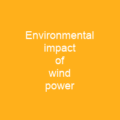Understanding Power Stations: The Heart of Our Electrical Grid
Imagine a bustling city humming with life, its every heartbeat powered by the unseen force of electricity. But where does this magic come from? A power station is like the powerhouse behind the curtain, converting raw energy into the three-phase electric power that lights up our lives. How does it all work?
The Evolution of Power Stations
In 1871, Zénobe Gramme invented a commercial-scale generator, marking the beginning of modern power stations. Just over a decade later, in 1882, Thomas Edison’s public coal-fired power station in London lit up the night sky, setting the stage for what was to come. But it wasn’t until the war of currents between direct current (DC) and alternating current (AC) that AC distribution became the standard.
Diverse Energy Sources
The energy sources powering these stations are as varied as they are numerous. From fossil fuels like coal, oil, and natural gas to nuclear power, renewables such as hydroelectricity, wind, solar, and biomass, each source brings its own unique challenges and benefits. Which one do you think will shape the future of our energy needs?
Thermal Power Stations: The Workhorses
Thermal power stations are like the workhorses of the industry, converting heat into electricity through steam turbines or combustion turbines. These plants can be incredibly efficient, with some achieving up to 65% conversion efficiency in gas-fired units. But even these giants have their limitations; they produce waste heat that must be managed carefully.
Waste Heat Management
The waste heat produced by thermal power plants is a double-edged sword. While it can be reused through cogeneration or combined cycle plants, it also poses environmental challenges. How do we balance the need for efficiency with the impact on our planet?
Renewable Energy: The Future
Renewables like hydroelectricity and solar power are leading the charge towards a cleaner future. Hydroelectric plants harness the gravitational force of water, while solar cells convert sunlight directly into electricity. These sources not only reduce our carbon footprint but also offer a sustainable alternative to traditional fuels.
Diverse Renewable Technologies
From parabolic troughs and heliostats in solar thermal power plants to the towering structures of central tower systems, renewable technologies are constantly evolving. Wind turbines, marine energy, and biomass all contribute to a diverse portfolio that can meet our growing energy demands.
The Role of Power Plants
Power plants play a crucial role in managing supply and demand. They can be dispatched or non-dispatchable, base load or peaking, each serving a specific purpose. How do these different types of power plants work together to ensure a steady flow of electricity?
Efficiency and Environmental Impact
The efficiency of power plants is measured in megawatts (MW) or gigawatts (GW), with some of the largest installations being wind farms, solar parks, and hydroelectric dams. These facilities not only generate massive amounts of electricity but also have significant environmental impacts that must be carefully managed.
The Future of Power Stations
As technology advances, so too will our power stations. From the integration of renewable sources to the development of new energy storage technologies, the future is bright. What role do you think these advancements will play in shaping our energy landscape?

Power stations are the unsung heroes of our modern world, providing the energy that powers our cities and homes. As we continue to innovate and adapt, these facilities will remain at the heart of our electrical grid, ensuring a steady flow of power for generations to come.
You want to know more about Power station?
This page is based on the article Power station published in Wikipedia (retrieved on November 30, 2024) and was automatically summarized using artificial intelligence.






